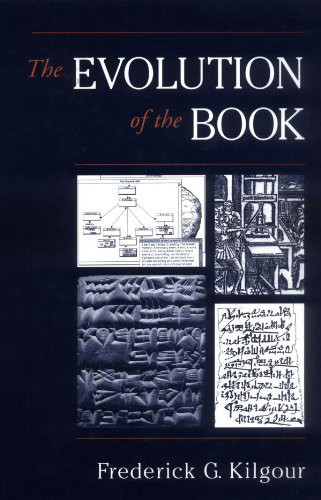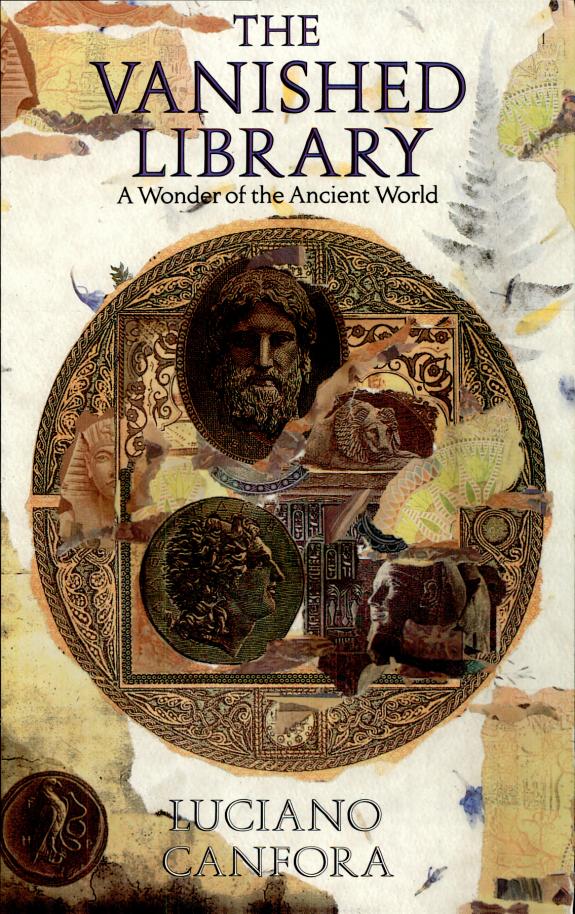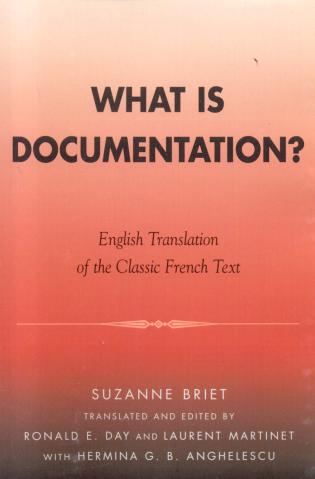Frederick G. Kilgour: The Evolution of the Book (1998)
Filed under book | Tags: · book, codex, e-book, history of technology, hypertext, library, networks, paper, print, publishing, technology, writing

A concise book by the professor in library and information science who, in the late 1960s, helped to establish the Online Computer Library Center (OCLC), a worldwide consortium of library databases.
Writing from the perspective of history of technology, Kilgour investigates the book’s three discrete forms–the clay tablet, papyrus roll, and codex–before turning to the electronic book.
Publisher Oxford University Press, New York, 1998
ISBN 0195118596, 9780195118599
180 pages
Review (Robert J. Brugger, Technology and Culture, 2001)
Review (Bruce Whiteman, Huntington Library Quarterly, 1998)
PDF (12 MB)
Comment (0)Luciano Canfora: The Vanished Library: A Wonder of the Ancient World (1986–) [Italian, English]
Filed under book | Tags: · antiquity, book, knowledge, library

The Library of Alexandria, one of the wonders of the Ancient World, has haunted Western culture for over 2,000 years. The Ptolemaic kings of Egypt—successors of Alexander the Great—had a staggering ambition: to house all of the books ever written under one roof, and the story of the universal library and its destruction still has the power to move us.
But what was the library, and where was it? Did it exist at all? Contemporary descriptions are vague and contradictory. The fate of the precious books themselves is a subject of endless speculation.
Canfora resolves these puzzles in this unusual book. He recreates the world of Egypt and the Greeks in brief chapters that marry the craft of the novelist and the discipline of the historian. Anecdotes, conversations, and reconstructions give The Vanished Library the compulsion of an exotic tale, yet Canfora bases all of them on historical and literary sources, which he discusses with great panache. As the chilling conclusion to this elegant piece of historical detective work he establishes who burned the books.
Publisher Sellerio, Palermo, 1986
Sixth edition, 1990
203 pages
English edition
Translated by Martin Ryle
First published by Hutchinson Radius, 1989
Publisher University of California Press, 1990
ISBN 0520072553, 9780520072558
205 pages
Review (Julia Haig Gaisser, Bryn Mawr Classical Review, 1991)
Review (Hugh Lloyd-Jones, The New York Review of Books, 1990), Response
Review (Evelyn Edson, Vergilius, 1991)
Publisher (EN)
La biblioteca scomparsa (Italian, 6th edition, 1986/1990, 7 MB)
The Vanished Library (English, 1989/1990, 10 MB)
Suzanne Briet: What is Documentation? (1951/2006) [French, English]
Filed under book | Tags: · bibliography, cultural techniques, data, document, information, knowledge, knowledge production, library

Born in Paris in 1894, Suzanne Briet was active in the development of what was then known as Documentation but would now be called Information Management or Information Science. In 1931, she participated in founding the Union Française des Organismes de Documentation (UFOD). She was a leader in developing professional education for this new specialty and designed a plan for what would have been the first school of Documentation / Information Science worldwide, had it been established. In 1951, when a school of information science was finally established, Briet was the founding Director of Studies. She became Vice President of the International Federation for Documentation (FID) and acquired the nickname “Madame Documentation.”
What is Documentation? relates this fascinating story and includes the first English translation of Briet’s remarkable manifesto on the nature of documentation, Qu’est-ce que la documentation?. Part I sought to push the boundaries of the field beyond texts to include any material form of evidence (“Is a living animal a document?” she asked). Part II argued that a new and distinct profession was emerging. Part III urged the societal need for new and active documentary services.
This tract remains significant due to its continuing relevance towards understanding the nature, scope, and societal impacts of documents and documentation. Briet’s modernist perspective, combined with semiotics, deserves attention now because it offers a sturdy and insightful alternative to the scientific, positivist view that has so dominated information science and which is increasingly questioned.
Publisher EDIT, Paris, 1951
48 pages
via Laurent Martinet
English edition
Translated and edited by Ronald E. Day and Laurent Martinet with Hermina G. B. Anghelescu
Publisher Scarecrow Press, 2006
84 pages
via Ronald E. Day
Reviews: W. Bede Mitchell (College & Research Libraries, 2007), Jonathan Furner (Libraries & the Cultural Record, 2008).
Publisher (EN)
Qu’est-ce que la documentation? (French, 1951, updated on 2017-11-16)
What is Documentation? (English, 2006, PDFs), single PDF (OCR’d, added 2014-8-14 via Marcell Mars)

